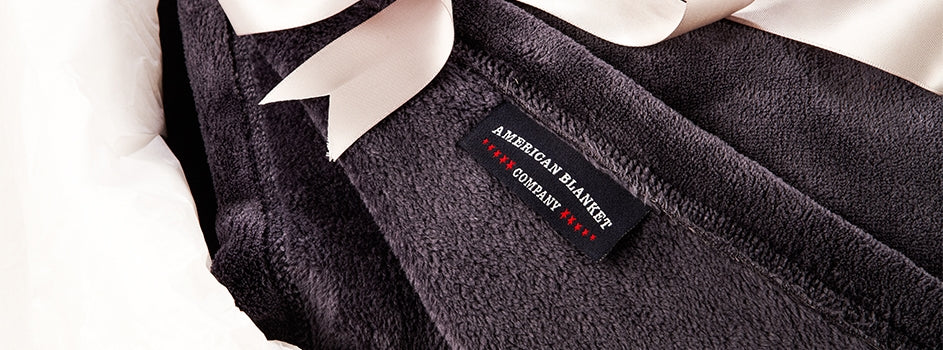
2019 Guide to Fleece Blanket Material:
The difference between buying a good or bad fleece blanket is a major one.
On one hand, you could have a blanket that is perfect for snuggling under when it gets chilly. It also provides warmth without the allergies triggered by a lot of wool blankets or natural fiber blankets.
On the other hand, you could have a blanket that pills and sheds everywhere after the first wash and can become an unusable mess.
Here’s
a simple guide to fleece blankets:
Synthetic Fleece
There are two main types of fleece material. The first and most common is polyester or synthetic fleece. This was created as an alternative to wool and has all the pros of the material (unparalleled warmth, hypoallergenic, easy care, and soft) but none of the cons (the heavy weight, allergic reactions, dry clean only etc.)
Polyester fleece generally is less expensive than wool or cotton fleece fabrics. While there is variance in the type of fleece you get depending on the brand, overall, the underlying makeup of all of these are quite similar.
What do you need to watch out for in synthetic fleece brands?
Firstly, make sure that they advertise that the fleece is non-pilling. This means that it can be washed and used without small balls of polyester developing and sticking to the blanket. The only way pilling can be prevented is through a shearing process in the production. This extra step helps prevent pills and shedding and will help the blanket retain its luster after multiple washes.
The second thing is buying fleece blankets with a quality edge stitch. The quality of the hem stitch will determine how long the blanket will last. Look for hems that have multiple stitches on each side of the blanket. The more stitches determine the strength of the blanket.
Third
when cleaning and caring for your fleece blankets always machine wash on a cool
setting and tumble dry on low heat. The high heat setting tends to burn the
tips of the super soft fibers and will make the blanket become less soft if the
blanket sits on the side of the dryer at the end of the cycle.
Cotton
Fleece
Made from the same material as cotton sweatshirts, cotton fleece is quite soft and comfortable. Cotton Fleece fabrics are available in 100% Cotton and blends of Cotton 35% and Polyester 65%. Cotton Fleece can be a little more expensive than traditional synthetic fleece. Cotton fleece serves as the natural fiber alternative to polyester, especially for those who really like a natural fiber fabric and prefer the texture of Cotton
Keep
in mind cotton fleece tends to shrink when washed. Good brands will account for
this on their packaging and can make the original product slightly larger to
accommodate for the shrinkage after the first wash.
Weight
Different brands indicate the “lightness” or “heaviness” of fleece in different ways. Since even the smallest differences can have a very large effect on how warm a certain fleece blanket is, it’s important to buy from a brand you can trust.
Look for descriptions like grams per square meter or ounces per square yard. 300 - 400 grams per square meter and 10 – 14 oz per square yard is considered a heavy weight winter fleece. Summer weight fleece will range from 220-280 grams per square meter or 7 - 10 oz per square yard.
If you’re in the market for fleece blankets, keep all of these tips in mind and buy from a brand that uses the best materials when they’re making their blankets.:




